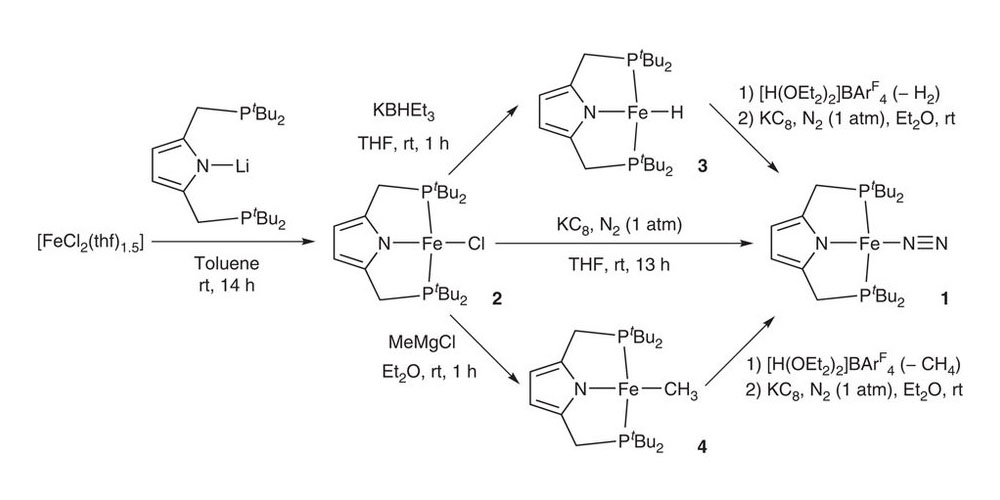Research Abstract
ピンサー配位子を持つ鉄-窒素錯体による窒素分子からアンモニアとヒドラジンへの触媒的変換反応
Catalytic transformation of dinitrogen into ammonia and hydrazine by iron-dinitrogen complexes bearing pincer ligand
2016年7月20日 Nature Communications 7 : 12181 doi: 10.1038/ncomms12181

鉄は工業的にも生物学的にも窒素固定において重要な役割を果たすため、鉄-窒素錯体の合成と反応性についてこれまでに広く研究されてきた。その結果として、最近になり鉄触媒を用いた窒素分子からアンモニアへの触媒的還元反応が達成された。今回我々は、アニオン性PNP型ピンサー配位子を持つ鉄-窒素錯体が触媒的窒素固定反応の効果的な触媒として働き、アンモニアとヒドラジンが混合物として生成することを明らかにした。今回の反応系では、遷移金属-窒素錯体を触媒として用いることによって、窒素分子が触媒的に直接ヒドラジンへ変換された。ヒドラジンはニトロゲナーゼの窒素固定の重要な中間体と考えられているため、今回報告した成果は、ニトロゲナーゼにおける反応機構を解明する知見を与えるものである。
Corresponding Authors
Synthesis and reactivity of iron-dinitrogen complexes have been extensively studied, because the iron atom plays an important role in the industrial and biological nitrogen fixation. As a result, iron-catalyzed reduction of molecular dinitrogen into ammonia has recently been achieved. Here we show that an iron-dinitrogen complex bearing an anionic PNP-pincer ligand works as an effective catalyst towards the catalytic nitrogen fixation, where a mixture of ammonia and hydrazine is produced. In the present reaction system, molecular dinitrogen is catalytically and directly converted into hydrazine by using transition metal-dinitrogen complexes as catalysts. Because hydrazine is considered as a key intermediate in the nitrogen fixation in nitrogenase, the findings described in this paper provide an opportunity to elucidate the reaction mechanism in nitrogenase.

